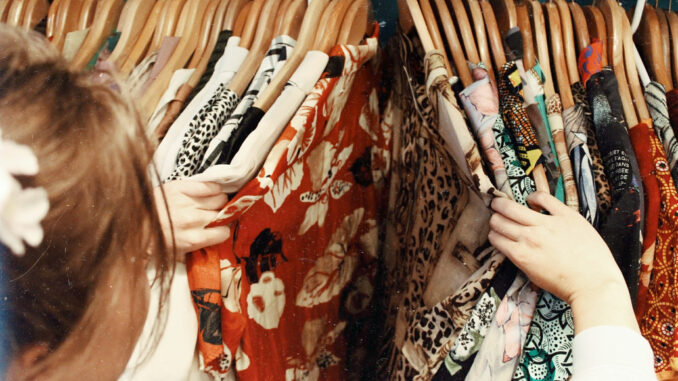
03/11/2021
Sarah DuJordan | Staff Columnist
I hate going to the mall or retail stores. Going to a thrift store, though, is different. At times, I feel like a pirate looking for treasure. I never know what surprises I will stumble upon.
The aroma of a thrift store is always potent, as they never fail to smell like your grandparents’ attic. I often spend three to four hours looking through the racks of clothing. My arm is always sore once I leave.
My mom always took us thrift shopping. So, it is a large reminder of my childhood.
Picking out my outfit prior to the next day of school was a constant routine of mine. Waking up early to “perfect” my outfit for another day of elementary school in the morning remained a part of the cycle as well; scanning my closet with the same intensity of someone with laser vision, trying to decide what outfit would make me look the best.
Always putting on my thrifted components, others never had an issue consistently taking the opportunity to negatively comment on the concept.
I never took offense to comments from anyone because thrift shopping was “normal” to me. My mom always said, “If people looked hard enough, they could find those brands at the thrift store. You are getting the same thing at a much cheaper price.”
Now at 20 years old, that motto continues to stay with me. I have learned thrift shopping is a therapeutic experience for me, along with a beneficial one.
Thrifting has transformed from benefiting people struggling economically to now being a quirky trend. Current fashion trends have seen the 1960s-90s making their way back into teenagers’ lives. Once dated trends such as overalls, chunky sweaters and shoes, high-waisted jeans and jean jackets are taking over the fashion industry.
What better place to get clothes of those decades than a store that has items donated by people who experienced those trends first-hand?
Thrift shopping is not just economically friendly, but environmentally. With global climate rights being at the forefront of conversation recently, interest in sustainable options have peaked — the obvious ones being a reduction in plastic and water waste, as well as some choosing a meat-free lifestyle.
Many often forget that thrift shopping is the original form of shopping sustainably. Sustainable clothing can be expensive, so knowing there are alternative options out there helps those on a budget — especially when those people on a budget are usually college students.
Thrifting is considered recycled clothing, making it extremely environmentally-friendly. It’s doing your part in saving the world, while saving your bank account.
Despite many positives, there have been numerous downsides to the recent gentrification of thrift shopping. Others depend on this method of acquiring winter coats, shoes or clothing for their kids and themselves just to survive. Many plus-sized women have also described having a lack of options at the thrift store.
Local thrift stores have also acknowledged the rise in this trend. With that, shoppers have also seen a rise in prices. As a child, I remember a shirt costing no more than $2; now, they can go for upwards of $7. I hope stores recognize that while the popularity in thrifting is exciting, some still rely on cheap prices to obtain everyday, needed objects.
I am privileged enough that deciding to get my clothes at a thrift store is a choice and not a necessity. Keeping this in mind, shoppers still can — and should be — ethical, while saving money by thrifting. Remembering to not purchase from the kid’s section, the winter coats, shoes or plus-sized section unless absolutely vital.
From the age of 7 to now 20, thrift shopping has found a way to weave itself into a hobby of mine. But who doesn’t love a hobby that won’t bust their budget?



